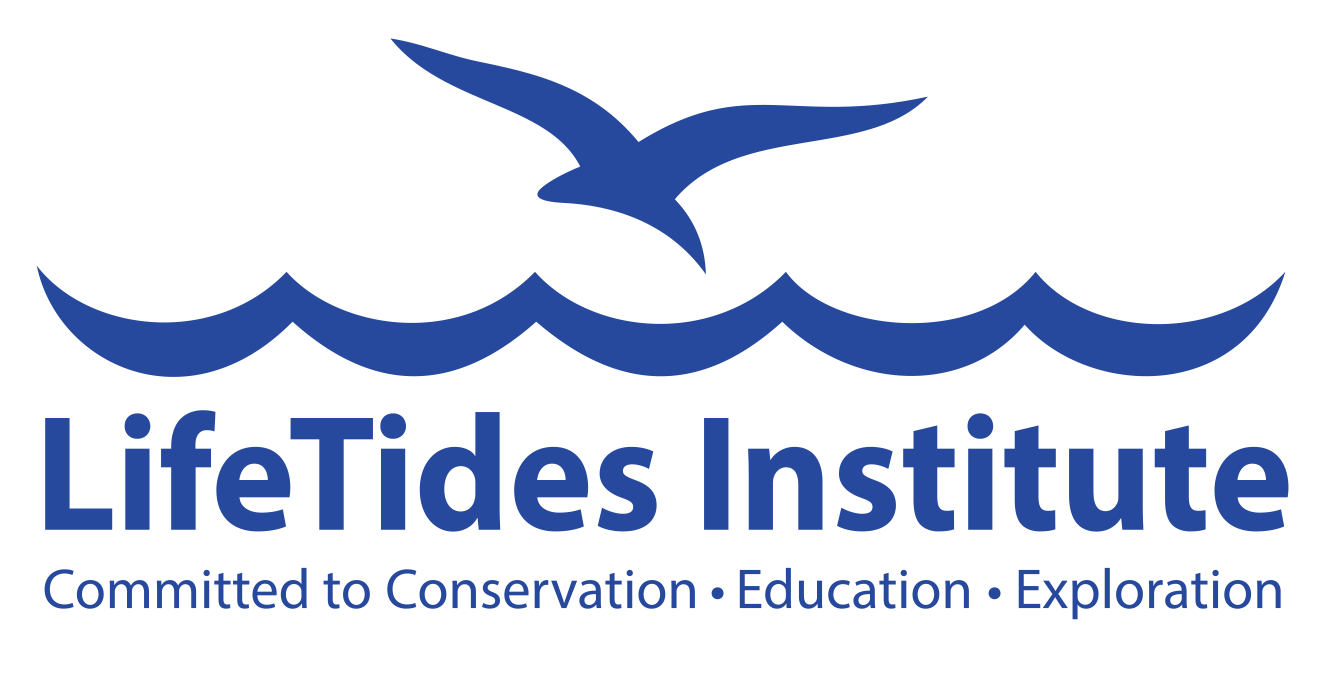LifeTides Student Curriculum Overview - Page Two
4. Who’s who in the zoo? #2. Predators and Prey - Length: 1.5 hours, all grade levels, more advanced content with middle and high school students.
This lesson presents and discusses the role that predators play in an ecological system. Predators include animals such as alligators, wading birds, kingfishers, hawks, ospreys, bald eagles, raccoons, minks, rats, cats (native cats & ferral cats) coyotes, ferral dogs (and the impact of these different species on the environment), armadillos, scavengers, vultures, crabs, raccoons, fox squirrels, gray squirrels. Students review and discuss short videos that demonstrate predators and their role in ecosystems. Students will witness some birds of prey first hand from a presentation and will also identify different predators and prey on site.
Student Learning Goals: “I can define what a predator is. ” • ”I can list five different predators and can identify their prey.” •”I can explain what the word “trophic” means and how predators and prey fit into this definition.
Success Criteria: ”I answered the written response questions following the lesson.” • ” I actively participated in discussion and responded to questions posed by my teacher. We discussed the different roles that predators have in the ecosystem.”
Terms: Predator, prey, trophic cascade, keystone species
Relevant Standards: 4th Grade (4.S.1.; 4.E.2; 4.P.4A); 5th Grade (5.E.3:, 5.L.4, ); 6th Grade (6.S.1A.8, 6.E.2, 6.P.3, 6.L.4), High School (H.B.6.A)
Great Blue Heron (Ardea herodias)
5. Who’s who in the zoo? #3. Bird Identification
More than 400 species of birds exist throughout South Carolina and wading birds, like the great blue heron (see photo on right), egrets and others, make up a significant percentage of birds that rely on the habitat of South Carolina’s Lowcountry. Students have the opportunity to learn about the different bird species that occur in and around Margaret’s Island and the surrounding marsh communities near Ridgeland.
Students will learn how to interpret identification keys (and even learn about and use of computer & mobile software applications), to learn about identifying marks of different birds, to learn about different bird songs and calls and to understand the life histories, habits and home ranges of many different birds.
Student Learning Goals: To identify different birds and explain parts of their life histories (how big they get, how long their species lives, where their range extends to on a map; where they hunt for food, what different types of food they eat and other facts about their life history.
Success Criteria: Primary: “I can identify at least three different birds and explain at least three key facts about their life history.” • ”I actively participated in discussion and responded to discussion or questions posed by my teacher.”
Secondary: “I can identify at least five different birds and explain at least five key facts about their life history.” • ”I answered the written response questions at the endof our lesson.” • ” I actively participated in discussion and responded to discussion or questions posed by my teacher.”
Terms: Life history, predator, prey, home range, flyway, forage.
Relevant Standards: 4th Grade (4.S.1.; 4.E.2; 4.P.4A); 5th Grade (5.E.3:, 5.L.4, ); 6th Grade (6.S.1A.8, 6.E.2, 6.P.3, 6.L.4), High School (H.B.6.A)
6. How do we come up with the names of different species?
"Shadow" -an Eastern Fox Squirrel (Sciurus niger)
We are human beings, but what are we called scientifically? Why? Students will learn about or review the process known as “binomial nomenclature”. "King Phillip Came Over For Green Salad(!)" is a memory jingle (or “Mnemonic”) to help remember the order of the categories that help drill down to specific names for any given species of plant or animal. [Kingdom, Phylum, Class, Order, Family, Genus, Species]
This class discusses the history of naming things. Using real world examples the ;esson traces the full name through the KPCOFGS process and discuss what each means. Following a classroom review, the classes will take a trip to Margaret's Island and participate in activities that will define and associate names with plants and animals that they can see and touch.
Student Learning Goals: Primary: I can name or draw lines to the correct naming of several plants and animals. Secondary: “I can define process used for naming plants and animals and I can explain the different levels from Kingdom down to and explain why these are important.” •”I can demonstrate an understanding why and how different species are named and why this is important.
Success Criteria: ”I successfully completed my activity forms or answered the written response questions during the activity.” • ” I actively participated in discussion and responded to discussion or questions posed by my teacher. We scientifically named several plants and animals during our field trip.”
Terms: binomial, genus, species, scientific naming, Karl Linnaeus
Relevant Standards: 4th Grade (4.S.1.; 4.E.2; 4.P.4A); 5th Grade (5.E.3:, 5.L.4, ); 6th Grade (6.S.1A.8, 6.E.2, 6.P.3, 6.L.4) 7th Grade (7.L.3A.2. 7.L.B.3.), High School (H.B.4)



